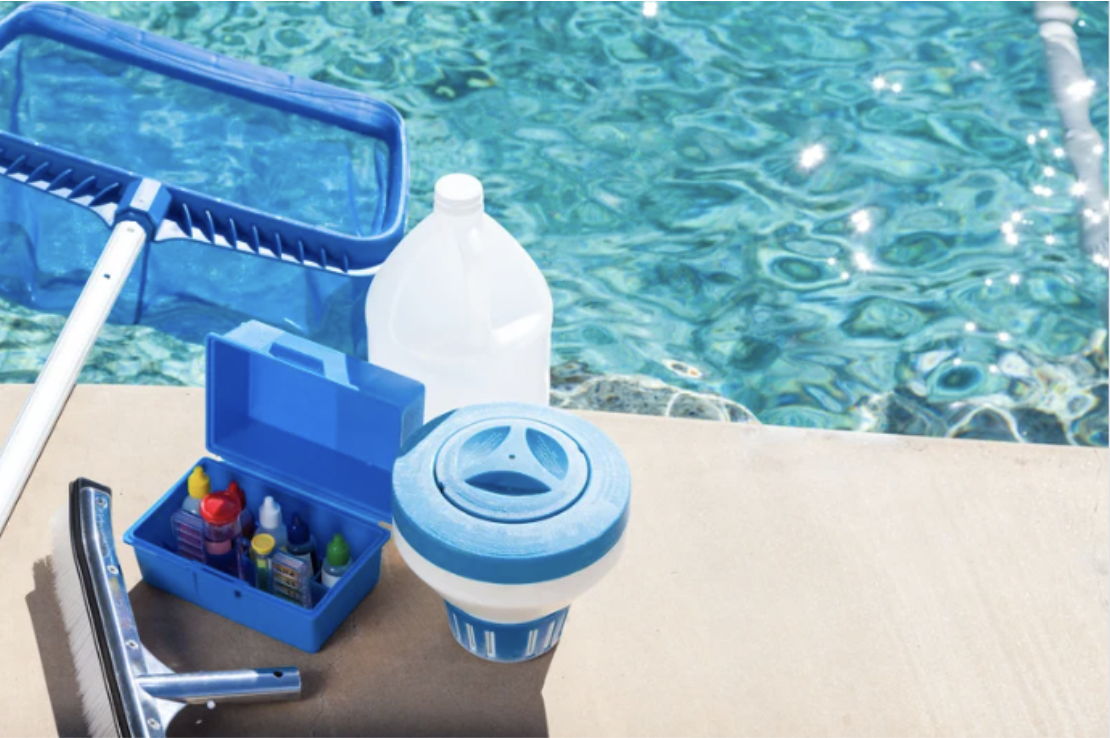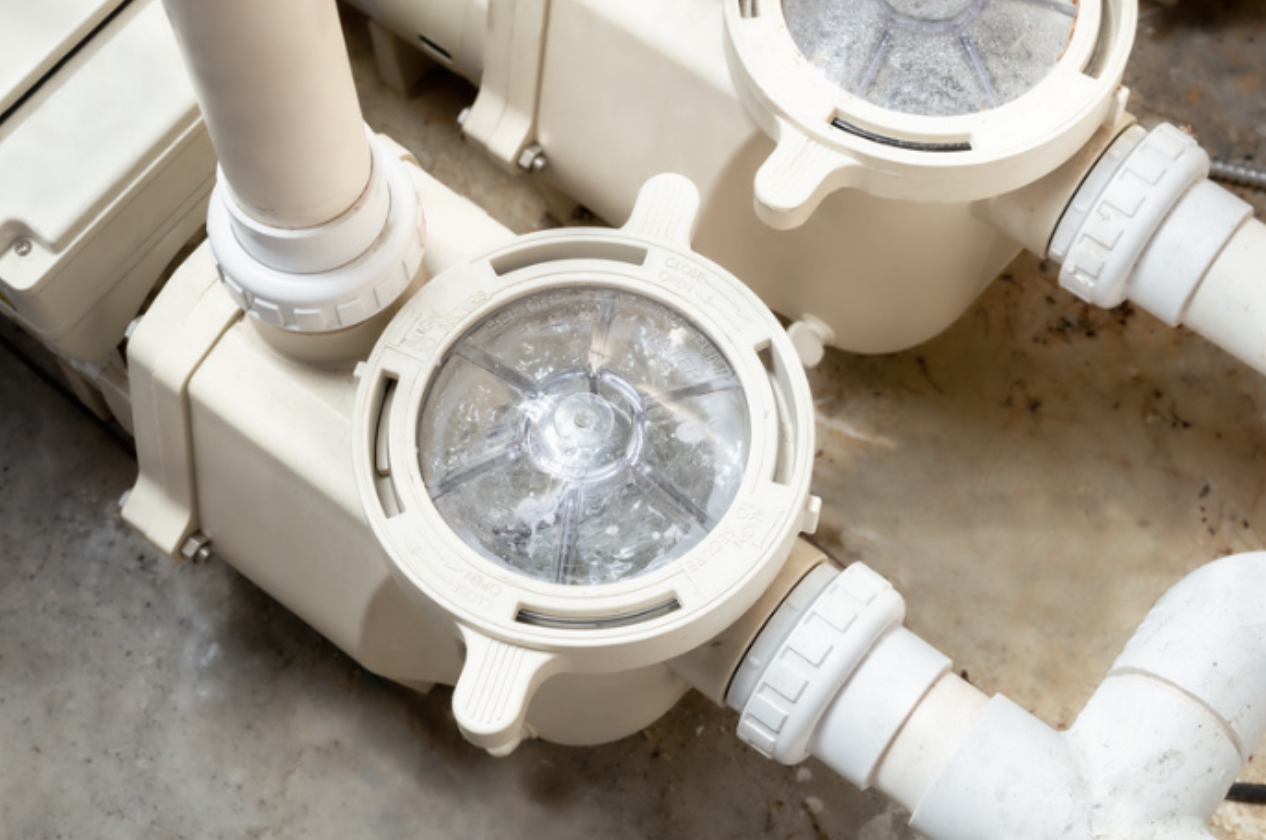The Complete Guide to Opening Your Pool for Summer
As the weather warms up and summer approaches, many pool owners eagerly anticipate opening their pools and enjoying a refreshing swim. However, opening a pool after the winter months can seem daunting for those unfamiliar with the steps involved. Don't worry, we've got you covered! This comprehensive guide will walk you through opening your pool step-by-step, you'll be sipping a refreshing beverage while soaking up the sun in your pool in no time.
Preparing for Pool Opening
Before enjoying a refreshing dip in your pool, you must take a few preparatory steps.
Cleaning the Pool Area
Remove debris, such as leaves or twigs, that may have collected in the pool area during the off-season. This will improve the aesthetics of your swimming area and reduce the likelihood of debris ending up in your pool once you remove the cover. Use a soft broom or blower to clean around your pool, paying attention to the surrounding decking or patio areas.
Checking Pool Equipment and Supplies
After cleaning the pool area, you should inspect the state of your pool equipment. This includes items such as pumps (Hayward and Pentair being two of the most popular pump brands), filters, heaters, and any pool-cleaning tools you may need during the opening process. Look for any signs of damage or wear, and note any items you need to replace.
You should also assess your stock of pool chemicals, including chlorine or salt (for saltwater pools), shock treatments, pH balancers, and algaecides. Check the expiration dates of your chemicals, as they can lose their effectiveness over time. Make a list of anything you need to replenish in preparation for the pool opening.

Inspecting and Adjusting Water Levels
The final preparatory step involves evaluating and, if necessary, adjusting your pool's water level. If the water level is too low, fill the pool with hose water until it reaches the appropriate level, usually halfway up the skimmer opening or pool tile. If the water level is too high, it may be necessary to drain some water to avoid overflowing when swimmers enter the pool.
Removing the Pool Cover
Now that you've prepared your pool area and checked all your equipment and supplies, the next step is removing the pool cover.
Types of Pool Covers
There are two primary types of pool covers: solid winter covers and safety covers. Solid winter covers are usually heavy and prevent debris from entering the pool during the off-season. Safety covers are lighter and designed more to prevent accidental falls into the pool rather than keep debris out.
Step-by-Step Process for Removing the Cover
Start by removing any water or debris from the top of the cover. For solid covers, using a cover pump will make it easier to remove any standing water. For safety covers, you can use a leaf blower or broom.
Once the cover is clean, have someone help you evenly and gently remove it to avoid dragging any remaining debris into the pool. Be sure to clean and dry the cover thoroughly before storing it to prevent mildew or mold growth.
With the cover off, it's also an excellent time to inspect it for any damages, such as rips or wear, that could affect its effectiveness next season. If you find damage, you can replace it before the winter.
Cleaning and Treating the Pool Water
After removing the cover, you should thoroughly clean and treat your pool water to ensure it's safe and comfortable to swim in.
Testing and Balancing Chemical Levels
Testing and adjusting the chemical levels is crucial to combat bacteria and algae growth, balance the water, and make it comfortable for swimmers. Test your water every week. Consistently testing your pool is key to maintaining proper chemical balance. Using a pool water testing kit, you should test the water's pH level, total alkalinity, calcium hardness, and chlorine or salt levels.
The ideal pH level for pool water is between 7.2 and 7.8. If your water's pH is out of this range, you'll need to add either a pH increaser or decreaser to bring it back into balance. Alkalinity should be between 80-120 ppm (parts per million), while calcium hardness should ideally be between 200 and 400 ppm. You should maintain chlorine levels between 1.0 and 3.0 ppm. If you have a saltwater pool, keep the salt concentration between 2,700 and 3,400 ppm. Check out our pool chemistry and water chemicals chart guide.
Vacuuming and Skimming the Pool
You can clean the water once you've balanced your pool's chemical levels. Use a pool skimmer to remove any surface debris, such as leaves or insects. Use a pool vacuum to remove dirt and debris at the bottom of the pool. Depending on the amount of debris, you may need to repeat this process a few times until the water is clear.
After this, it's a good idea to run the pool filter continuously for at least 24 - 48 hours to ensure the chemicals circulate and to allow the pool water to reach a clean and clear condition. Remember to backwash your filter if it becomes too dirty during the process.
Inspecting and Servicing Pool Equipment
The next step in preparing your pool for the summer season is to give your pool equipment a thorough inspection and perform necessary servicing tasks.
Checking Filters, Pumps, and Skimmers
Start by examining your pool's filter, pump, and skimmers. For the filter, ensure it's clean and undamaged. If your filter uses sand or cartridges, ensure they're in good condition and replace them if necessary. Be sure also to clean out your pump and skimmers, removing any existing debris.
Priming the Pool Pump
If your pool pump has been out of operation during the winter, you may need to prime it before it can function properly again. Fill the pump basket with water and secure the lid tightly to prime a pool pump. Turn it on, allowing it to run for a few minutes. The water should start to circulate. If it does not circulate after a while, repeat the priming process.

Addressing Any Maintenance Issues
While inspecting your pool equipment, look for potential maintenance issues. These may include leaks, broken seals, or worn-out parts. Addressing these issues now will help ensure a smoother pool opening process and prevent potential equipment failure during the swimming season.
Safety Inspections
Finally, perform a safety inspection of your pool area. This includes checking ladders, rails, diving boards, and any other equipment for damage or instability. Also, ensure that the pool's electrical systems, including any lighting, function correctly and safely.
Recommended Ongoing Maintenance Products
The following are some recommended pool products that you should consider investing in to help keep your pool in top-notch condition throughout the summer.
Invest in a good pool skimmer and vacuum to efficiently remove debris from your pool. A firm pool brush is also handy for scrubbing any stubborn algae or dirt on the walls and floor.
In terms of chemicals, you will need a quality water testing kit to monitor your pool's chemical balance regularly. Your stock should also include chlorine or salt, pH increasers or decreasers, shock treatments, and algaecides.
Make Your Pool Ready for the Summer Season
Maintenance of a swimming pool continues even after you finish opening it. Regular testing and adjusting of chemical levels, routine cleaning, and weekly equipment inspections should be your habits for a clean and safe pool throughout the pool season.
Remember, prevention is key. Regular maintenance saves you from the costly repairs and significant cleaning efforts that tend to result from neglect.
Don’t forget to cover your pool when it's not in use to prevent debris from falling in and keep it clean. Finally, always follow the manufacturer’s instructions when using pool chemicals to maintain their effectiveness.
Learning how to open your pool for summer can seem intimidating at first, but with this easy-to-follow guide, you will become a pro in no time.

